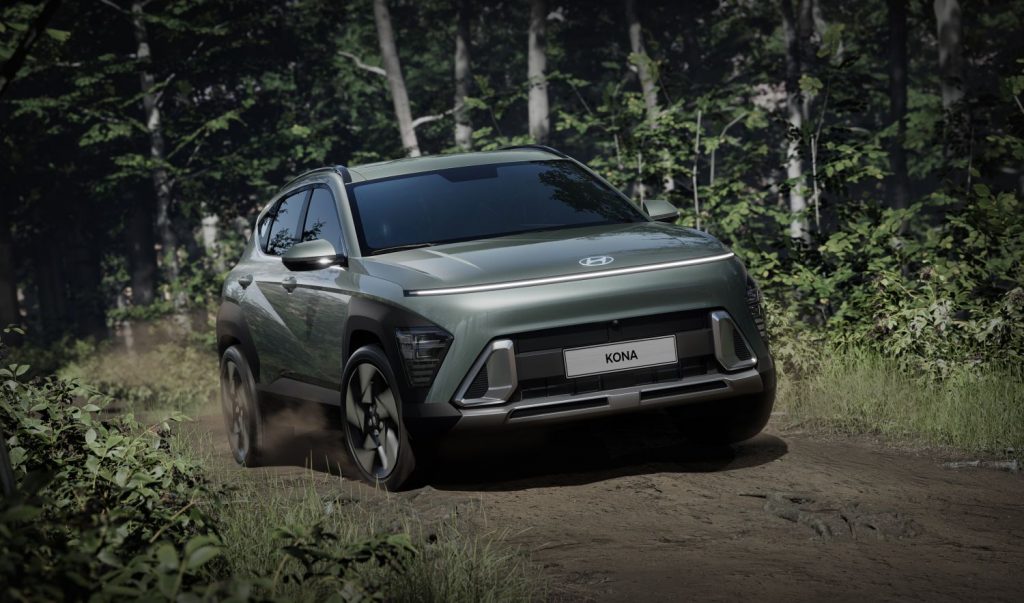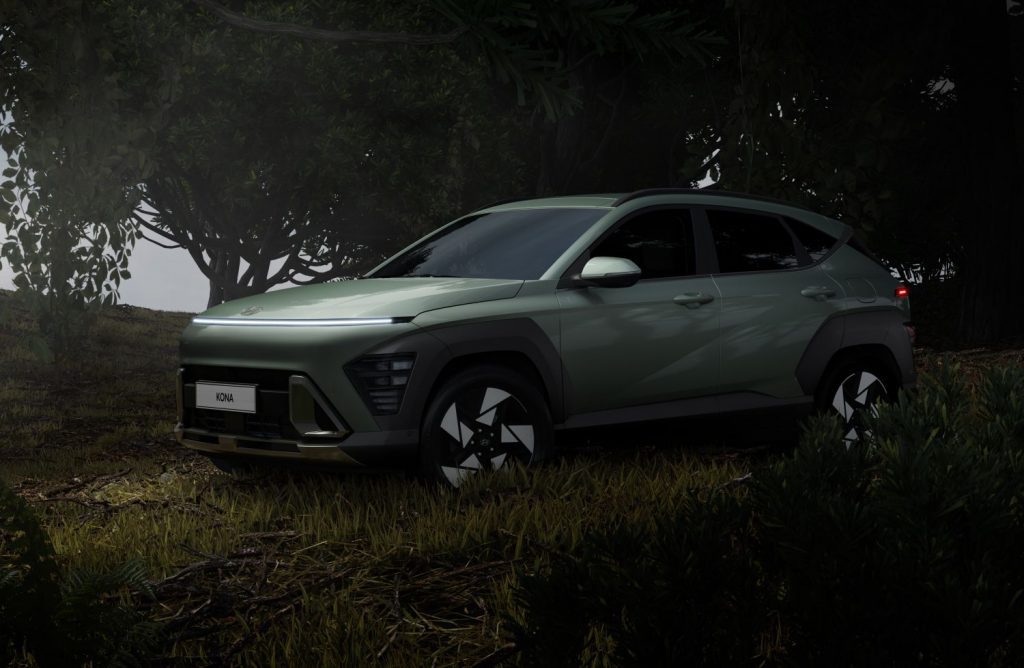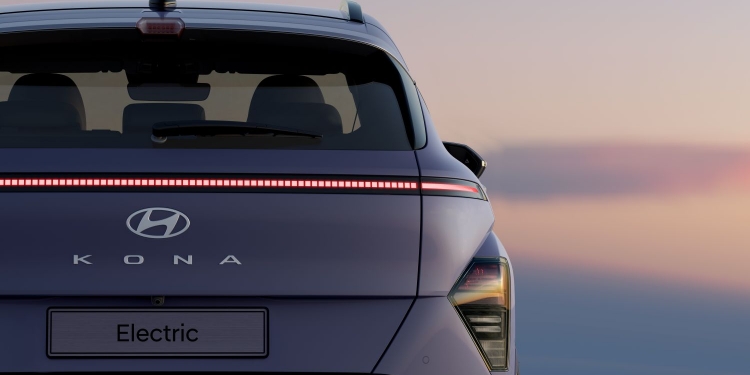The Hyundai Kona is the Korean carmaker’s compact SUV that’s offered in either petrol, hybrid or pure electric. When it was launched in Malaysia, the Hyundai Kona Electric was the cheapest EV you can buy at the time, priced from under RM150,000 for the base model. Before the year is out, Hyundai has unveiled its all-new Kona for 2023 and it’s all grown up

Similar to its current Kona lineup, the new compact SUV will be offered in various versions which include an all-electric (EV), hybrid electric (HEV), internal combustion engine (ICE) and a sporty N Line variant. What’s interesting is that the new Kona is taking an EV-focused approach rather than merely electrifying a standard petrol vehicle.
The company states, “Unlike most vehicles that are made available with a variety of powertrains, the Kona started with the EV variant design, which was then adapted the design for the ICE, HEV and N Line models. This unconventional approach allowed Hyundai to bring tech-centric design thinking to all KONA variants. Despite the shared architecture, EV, ICE/HEV and sporty N Line model has distinctive futuristic styling.”
The all-new Kona is now longer at 4,355mm, which is 150mm more than the current model (4,205mm). Hyundai has also increased the width by 25mm and the wheelbase is longer by 60mm. The current Kona Electric is 1,800mm wide and has a wheelbase of 2,600mm. As a comparison, the Hyundai Ioniq 5 is 1,890mm wide, 4,635mm long and has a humongous wheelbase of 3,000mm.

In terms of design, the Kona features a single full-width LED light bar on the front of the bonnet while it retains the original Kona’s lower bumper-mounted headlamps. The petrol-powered Kona variants will get a stretched Seamless Horizon Lamp while the EV version gets a pixelated version which Hyundai calls the Pixelated Seamless Horizon Lamp. There are more pixel design elements on the Kona Electric to make it stand out as an EV just like its bigger Ioniq 5 and Ioniq 6 siblings.
The only thing that’s not so nice is the charging point that’s still mounted on the front of the Kona Electric. The cutout for the cover of the charging port looks like an early-generation EV.
Hyundai has also carried over some Ioniq 5 design elements to the smaller EV SUV with sharp “Z-line” creases on the sides and extra plastic cladding on the lower portion of the doors. The rear of the new Kona electric also gets a Seamless Horizon Lamp and an integrated third brake light mounted on the satin chrome moulding of the rear spoiler.
Besides having more pixel elements, the electric model also gets “pixel-inspired” 19″ alloy wheels, a black embracing line and the option to have a blacked-out roof and side mirrors. The ICE and HEV variants get thicker and rugged-looking bumper and skid plate designs, as well as black wheel arch cladding for a more “SUV” appearance. The performance-oriented Kona N Line gets a more aggressive front and rear design with a wing-shaped bumper, a wing-type spoiler, twin-muffler and silver side skirt for a sportier look.

The interior gets a fresh new look and you can find Ioniq 5-inspired elements on the dashboard. The Kona gets two large 12.3″ wide displays on a floating panel and it features more ambient lighting for a more upmarket look. Although it still has a centre console, the gear selector uses a shift-by-wire stalk that’s placed behind the steering wheel. If you look closely at the centre area of the dashboard, it appears that Hyundai has retained physical controls for climate control and media controls, which is a good thing.
Hyundai adds that the EV-derived universal architecture accommodates a sporty layout with a floating horizontal C-Pad to emphasize Kona’s slim and wide interior, providing a versatile space for driver and passengers. Over at the rear, the Kona features a “Curve-less Bench Seat”, which Hyundai claims to provide a unique experience with maximum usability, comfort and convenience. Hopefully, this is a huge improvement over the current Kona Electric which has restricted legroom and the footwell isn’t deep enough. Based on the picture, it does have a flat floor which provides greater comfort for the middle passenger at the rear.

So far, this is just an early teaser and they have not provided any powertrain figures or driving range for the all-new Kona Electric. Hyundai says more details of the new compact SUV will be unveiled in the coming months.
At the moment, with SST included, the Hyundai Kona e-Lite with a 39.2kWh battery (up to 305km of range) costs RM156,538 while the range-topping Kona e-Max with a 64kWh battery (up to 484km of range) is priced at RM208,348. The electric motor on the e-Lite and e-Plus models pushes 134hp of power, while the e-Max’s motor delivers 201hp of power. Both electric motor options have the same maximum torque at 395Nm.
In case you missed it, you can check out our Hyundai Kona Electric Review or watch the video below of our 800km journey:








